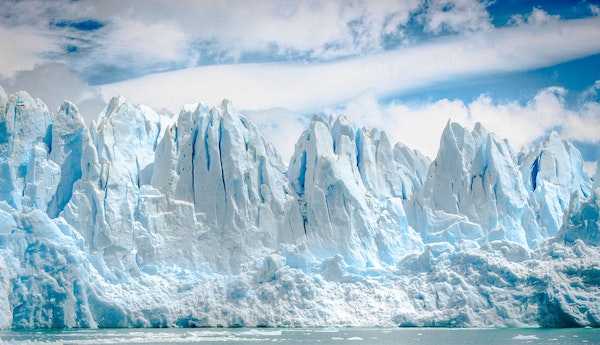FAQ 6: What is Climate Resilient Development and how do we pursue it?
The WGII overarching Frequently Asked Questions (FAQs) are an outreach material. They are based on the WGII Report and aim to help to interpret its concepts and findings to a broad audience. This version can still be subject to copyedits and tricklebacks.
Worldwide action to achieve a climate resilient, sustainable world is more urgent than previously thought. But what can be done? Our report highlights a solutions framework that we call Climate Resilient Development. It combines strategies to adapt to climate change with actions to reduce greenhouse gas emissions to support sustainable development for everyone. Action to implement this concept has to start now because making progress is already challenging at current global warming levels. If temperatures exceed 2°C of warming, climate resilient development will become impossible in some regions of the world.
We know that climate change presents risks to nature, people and infrastructure around the world. These risks will increase with every small increase in warming, and reducing them is made more complicated by other global trends such as over-consumption, population growth, rapid urbanization, land degradation, biodiversity loss, poverty and inequity, etc. In short: the world is facing a long list of complex and interacting challenges that need to be dealt with simultaneously.
Both the urgency and the complexity of the climate change crisis require actions at a new depth and scale. Our report provides a solutions framework that successfully combines strategies to deal with climate risks (adaptation) with actions to reduce greenhouse gas emissions (mitigation) which result in improvements for nature’s and people’s well-being – for example by reducing poverty and hunger, improving health and livelihoods, providing more people with clean energy and water and safeguarding ecosystems on land, in lakes and rivers and in the ocean. This solutions framework is called Climate Resilient Development.
In developing countries and in areas that are particularly exposed to climate change (e.g., in coastal areas, small islands, deserts, mountains and polar regions) climate impacts and risks can exacerbate vulnerability and injustices which can undermine efforts to achieve sustainable development, particularly for marginalized communities. But each country will follow its own path. Importantly, each country has different capacities and opportunities for Climate Resilient Development. Nevertheless, our report clearly shows that rapidly scaled-up, well-aligned investment facilitates Climate Resilient Development and that it advances more quickly with increased international cooperation and financial assistance.
Striving for Climate Resilient Development means reducing exposure and vulnerability to climate hazards, cutting back greenhouse gas emissions and conserving biodiversity are given the highest priorities in everyday decision-making and policies on all aspects of society including energy, industry, health, water, food, urban development, housing and transport. It is about successfully navigating the complex interactions between these different systems so that action in one area does not have adverse effects elsewhere and opportunities are harnessed to accelerate progress towards a safer, fairer world.
Climate Resilient Development isn’t achieved with a single decision or action. It’s the result of all of the choices we make about climate risk reduction, emissions reductions and sustainable development on a daily basis. New scientific evidence shows that addressing the risks and impacts of climate change successfully involves a more diverse set of actors than previously thought – not just policy-makers but everyone in government, civil society and the private sector. For example, if we consider changes in agriculture, it takes a combination of effective government policy and regulation as well as informed daily decisions by farmers, traders and agricultural companies to lead to fundamental change which is required to adapt to a changing climate, reduce greenhouse gas emissions and secure lives and livelihoods not just of those directly involved but for wider society as well.
In brief: Climate Resilient Development involves everyone. The prospects for effective action improve when governments at all levels work with citizens, civil society, educational bodies and scientific institutions, the media, investors and businesses and form partnerships with traditionally marginalised groups, including women, youth, Indigenous Peoples, local communities and ethnic minorities. In such a societal setting, scientific, Indigenous and local knowledge and practical knowhow can come together to provide more relevant effective actions. In addition, different interests, values and worldviews can be reconciled if everyone works together.
Targeting a climate resilient, sustainable world involves fundamental changes to how society functions, including changes to underlying values, worldviews, ideologies, social structures, political and economic systems, and power relationships. This may feel overwhelming at first, but the world is changing anyway and will continue to change so Climate Resilient Development offers us ways to drive change to improve well-being for all – by reducing climate risk, tackling the many inequities and injustices experienced today, and rebuilding our relationship with nature.
The choices we make in the next decade will determine our future. Our report clearly states Climate Resilient Development is already challenging at a warming level of less than 1.5°C, and will become more limited by 2°C. In some regions, it will be impossible if the temperature exceeds 2°C, including low-lying coastal cities, settlements and small islands, some mountain areas and polar regions.
This key finding underlines the urgency for climate action and that focusing on equity and justice as well as on adequate funding, political commitment and partnerships lead to more effective climate change adaptation and emissions reductions.
The scientific evidence is unequivocal: climate change is a threat to human well-being and the health of the planet. Any further delay in concerted global action will miss a brief and rapidly closing window to secure a liveable future.


